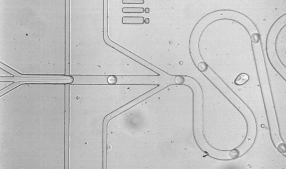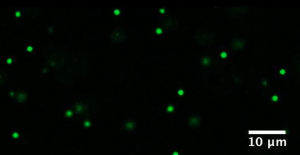Videos

3D Printing our Soft Elastomers
We have created the softest ever stimuli-reversible elastomers by exploiting the assembly of architecturally designed block copolymers. These elastomers can be used for direct-writing printing adaptive structures and devices.

Single cell encapsulation
This movie shows encapsulation of single cellin in micro-hydrogel particles using drop-based microfluidics. The size of each droplet is 35um, and the production rate of droplets is ~1000/sec.

Core-shell hydrogel particles
This video shows how to use drop-based microfluidics to make core-shell micrometer hydrogel particles. In this example, the core is dextran solution, whereas the shell is alginate crosslinked by Ca2+.

Particle tracking microrheology
This video shows the diffusion of fluorescent microparticles in a solution of biological polymers - mucus. Tracking the motion of individual particles allows one to back out the viscoelasticity of the polymer solution. Such a technique is called microrheology.

Migration of MDCK cells on substrate
This video shows collective migration of Madin-Darby canine kidney (MDCK) epithelial cells on a substrate made by soft, 'dry' polydimethylsiloxane (PDMS) elastomers.

Cilia Beating
This video shows the beating of cilia on the surface of human airway. The cilia are beating coordinately at a frequency of 10-14Hz to clear mucus out of lung.